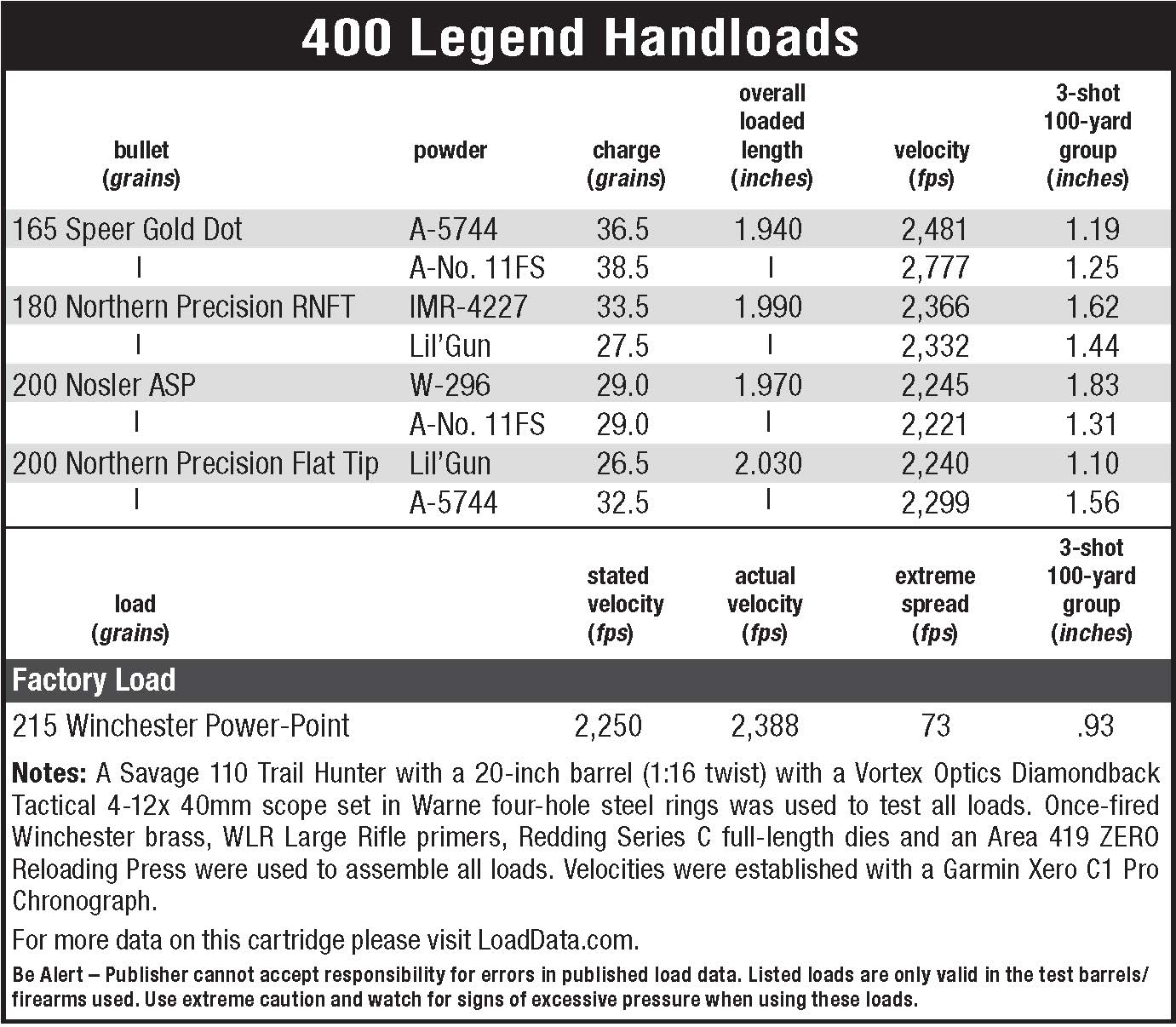Savage Arms 110 Trail Hunter in 400 Legend
An Ultra-Handy Bolt-Action Rifle
feature By: Patrick Meitin | September, 24
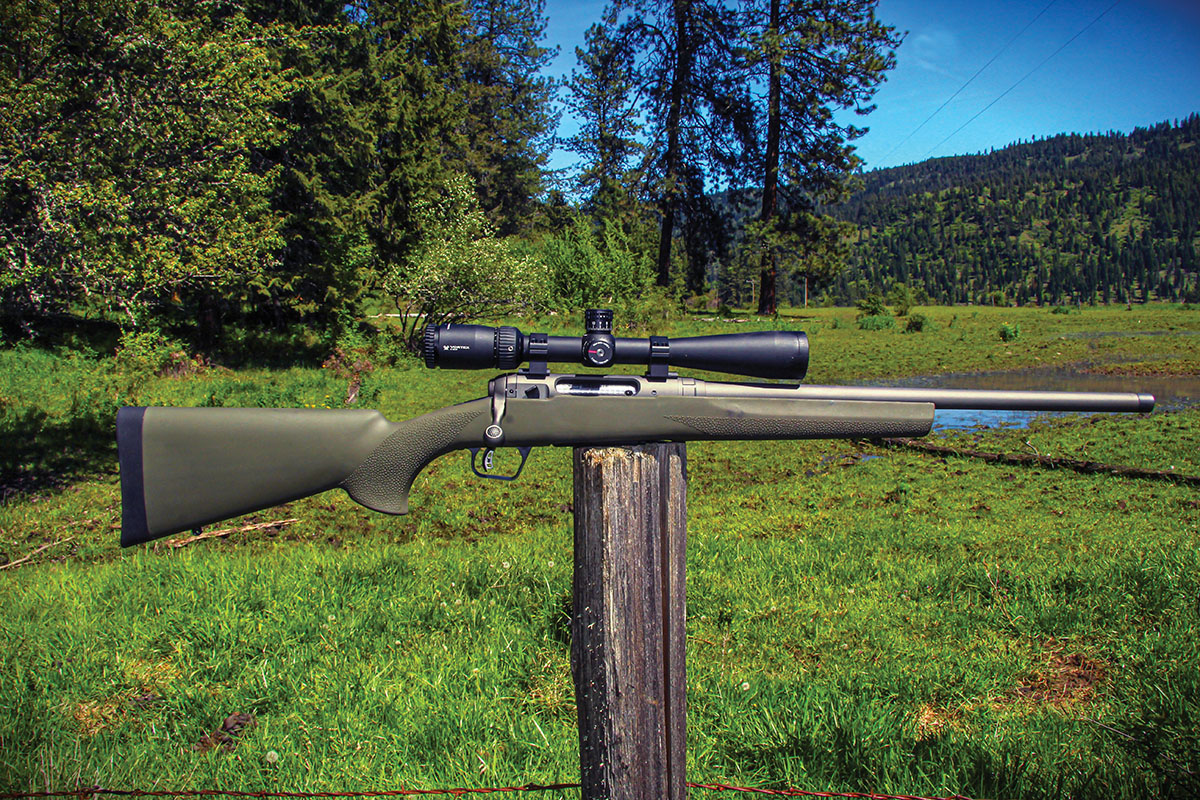
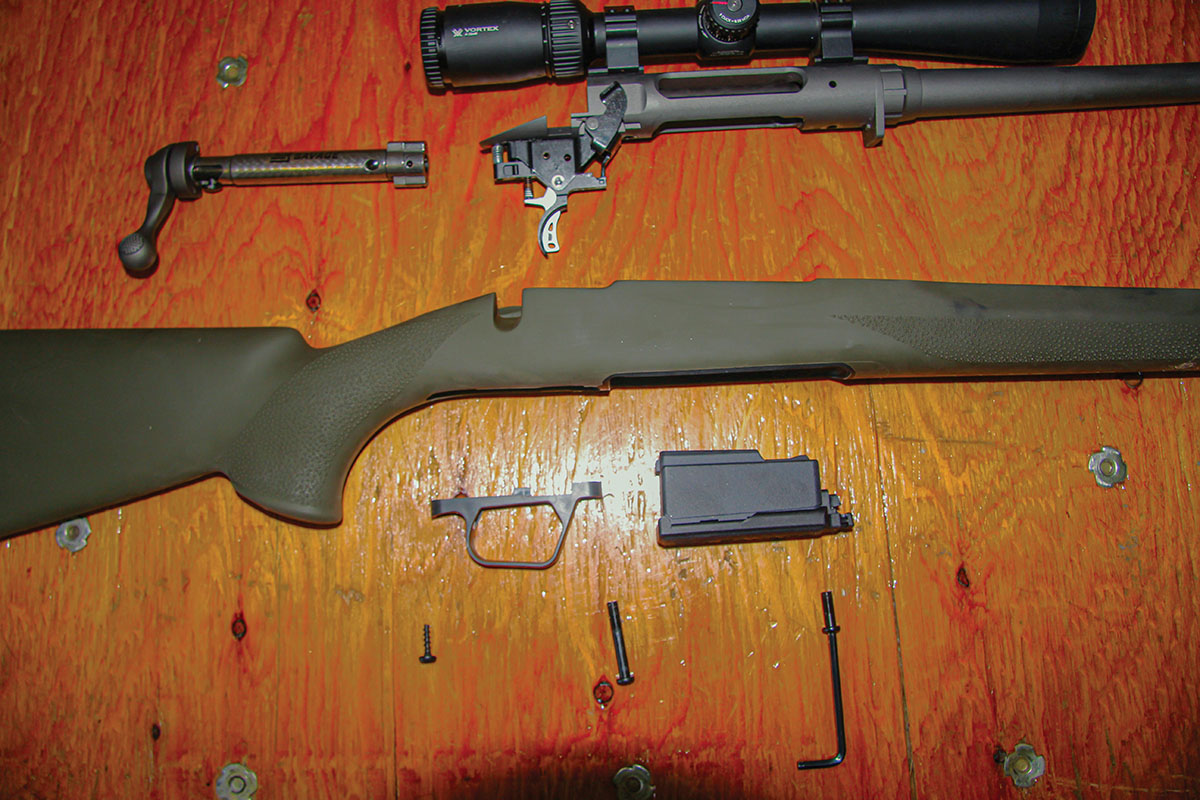
While Savage Arms certainly offers some top-end wares, it is their utilitarian rifles that American shooters are likely most familiar with, including the company’s basic 110 models. The Savage rifles that I’ve shot most often would win no beauty contests, but they have proven exceptionally reliable and accurate with a variety of ammunition types.
The Savage 110 Trail Hunter under discussion here is such a rifle. It is not exactly attractive, but it is certainly a solid tool for serious hunters, made to stand up to the harshest conditions. This is due in part to its complete CERAKOTE ceramic finish that seals out moisture and grime and ensures rust will not form in the most inclement weather. The 110 Trail Hunter is bedded in a Hogue Overmolded Rubber Stock, renowned for offering a stable base and providing a firm grip in the wettest/iciest weather or with sweaty palms while also being warm to the touch when temperatures plummet.
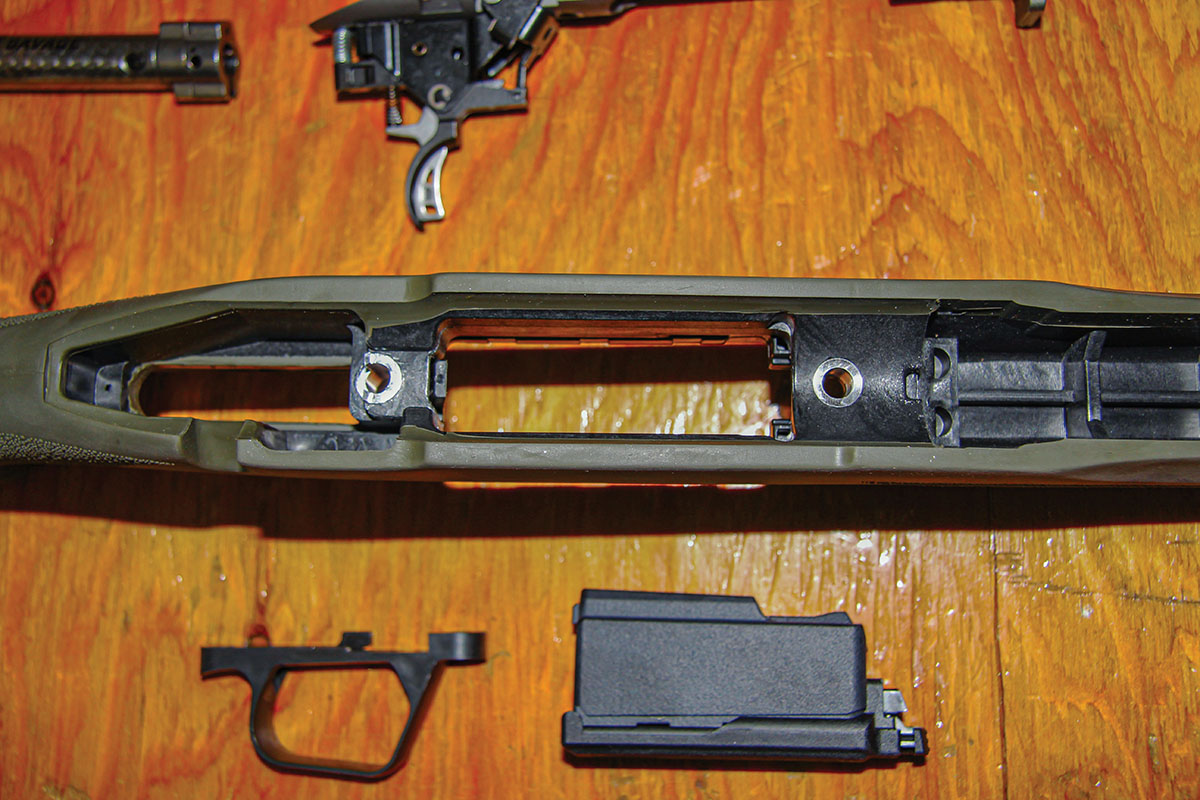
Savage calls the Trail Hunter a “do-it-all” rifle, but the 400 Legend chambering chosen in this case makes it somewhat more specialized. Of course, the 110 Trail Hunter is also chambered in several predator/varmint and big-game cartridges, from the 223 Remington to the 300 Winchester Magnum and 450 Bushmaster. The 400 Legend gives American whitetail and black bear hunters working under straight-walled cartridge regulations an excellent option, delivering 450 Bushmaster energy levels but with 20 percent less recoil and putting 20 percent more energy on target than the venerable 30-30 Winchester.
The 400 Legend improves the 350 Legend/180-grain velocity by 150 feet per second (fps) and generates 25 percent more energy – 650 foot-pounds more, to be precise. The 400 Legend maintains a benchmark of 1,000 foot-pounds of energy out to 230 yards, impacting 1.8 inches high at 100 yards and dropping 4.9 inches at 200 yards with a 150-yard zero while firing 215-grain bullets. The bullet drop at 300 yards with this same zero is 26.4 inches, where it maintains 770 foot-pounds of kinetic energy.
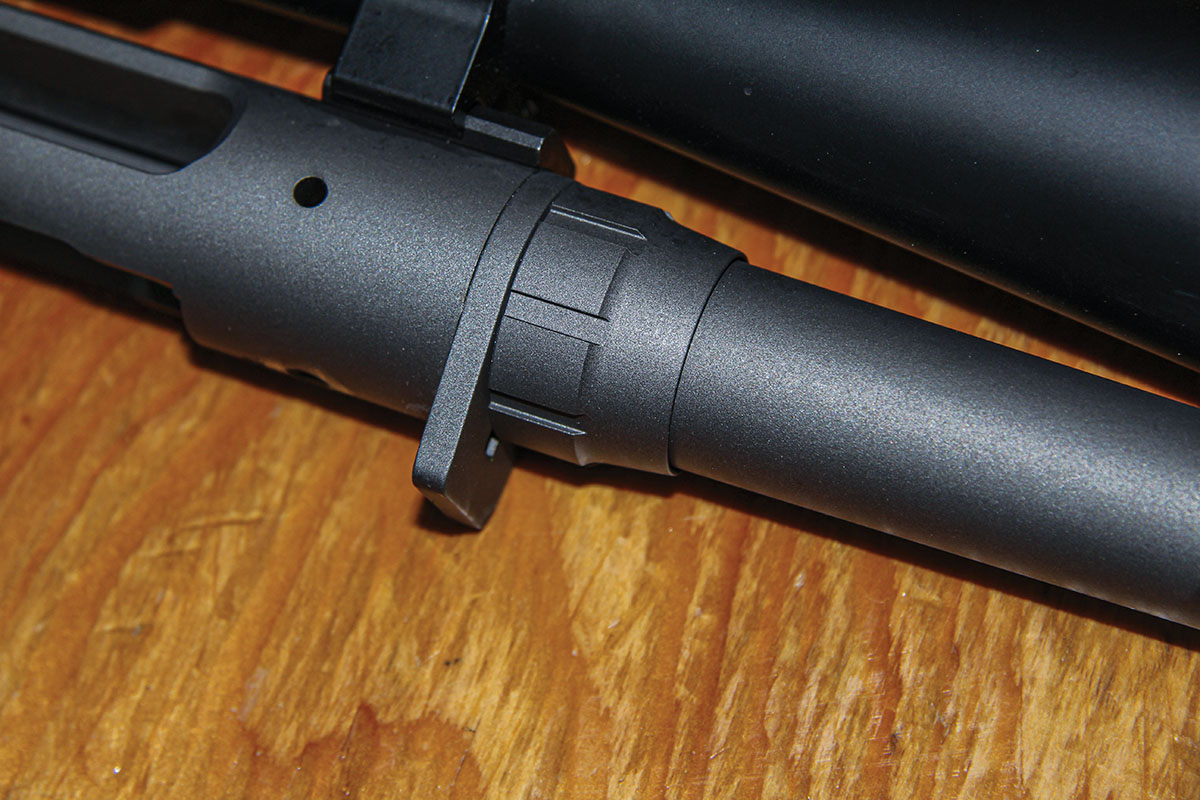
The 400 Legend was introduced by Winchester in 2023. The company’s introductory load used a 215-grain, .40-caliber/10mm Power-Point softpoint bullet that has a sectional density of about .191. This is not earth-shattering, but not inconsequential either. Winchester has mono-copper offerings in the works, and a new Super Suppressed 300-grain Open Tip Range subsonic offering set to be released in 2024. Only a year after its introduction, rifle manufacturers have bought into the idea, with not only Savage, but Winchester, Mossberg, Ruger and CMMG offering rifles so chambered, that I am aware of. Savage alone offers more than a dozen 400 Legend-chambered rifles, so the currently available rifles far outnumber ammunition options, which provides insight into its coming popularity.
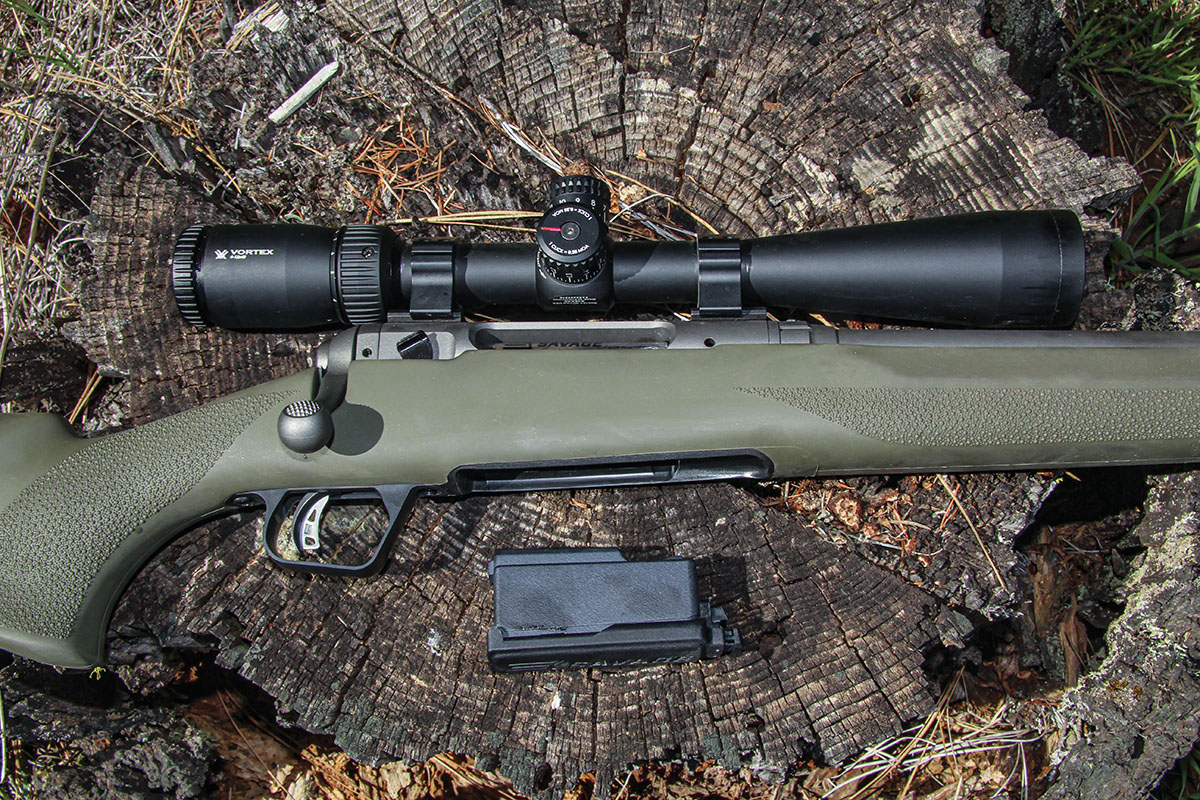
The 400 Legend provides what some may have found lacking in the smaller caliber 350 Legend – deeper penetration and improved knockdown for larger targets or for those hunters operating in thicker, wetter vegetation where tracking can prove challenging. It does this while producing recoil levels tolerable to all but the most sensitive shooters; I’d say on par with the average 30-06 Springfield.
Like its little brother, the 350 Legend and more recently Remington’s 360 Buckhammer, the 400 Legend was designed in response to many midwestern states adopting straight-walled cartridge regulations. As noted during a recent 360 Buckhammer review, when a set of regulatory parameters that directly affect
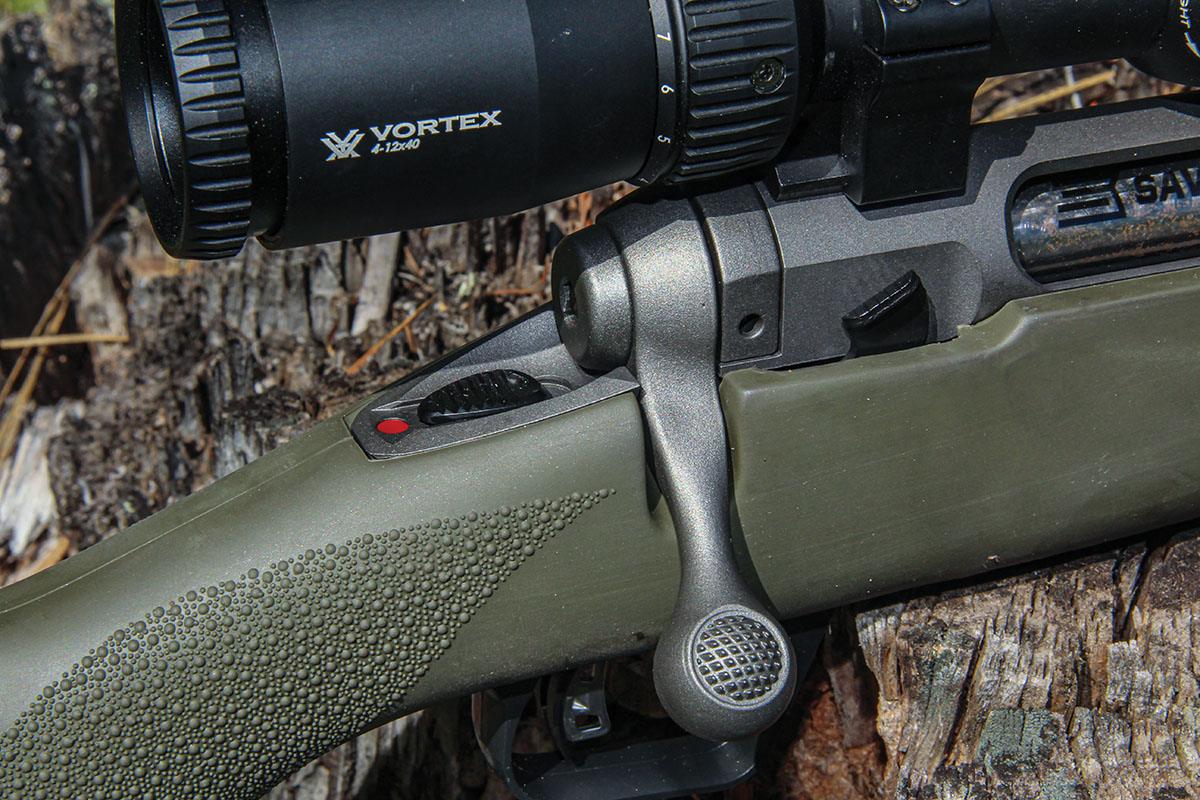
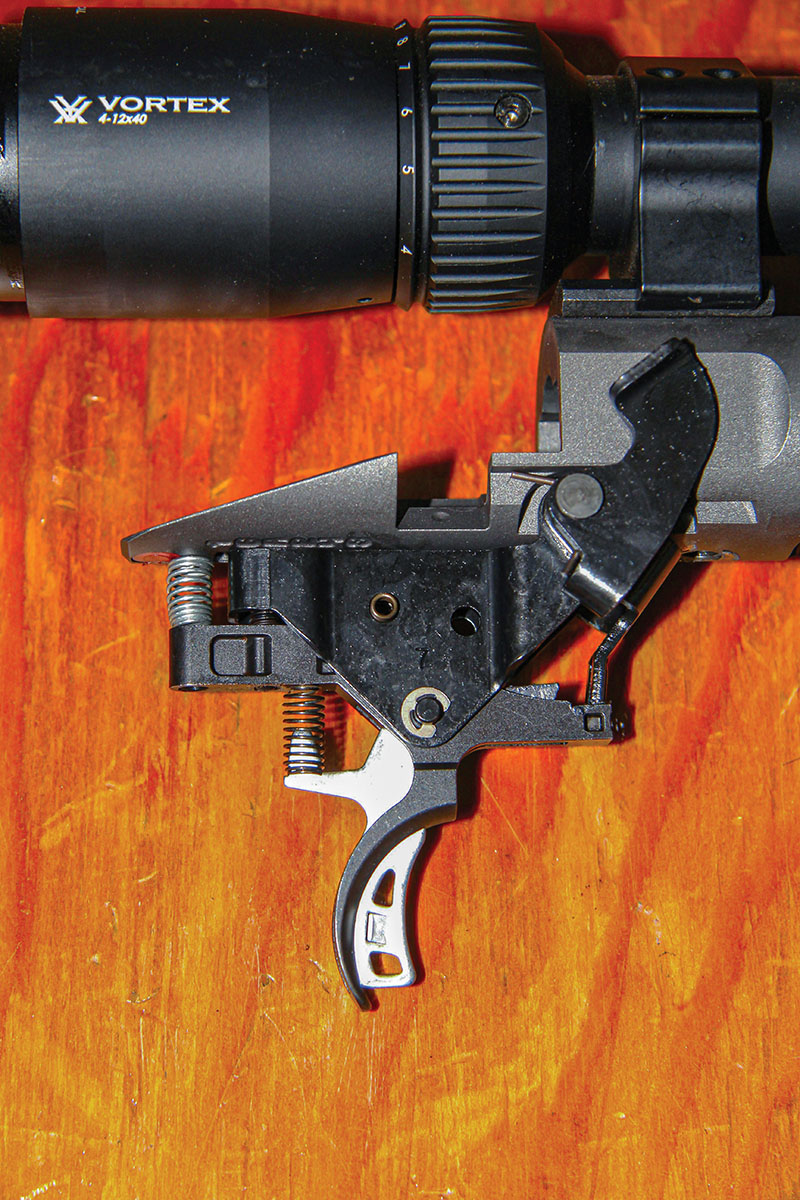
The 400 Legend uses bullets including a nominal diameter of .4005, which opens the door to heavy-for-caliber 10mm pistol bullets that can withstand the cartridge’s 2,250 fps launch speeds (with 215-grain bullets). The case length is 1.65 inches, which uncoincidentally is slightly shorter than the maximum case-length limit mandated by most state’s straight-walled regulations. The 400 Legend includes minimal body taper and a rebated rim, meaning it headspaces off of the case mouth. It includes a maximum overall loaded length of around 2.20 inches, making it AR-15 compatible.
Any shooter familiar with Howa 1500 rifles will find the 110 Trail Hunter’s stock quite recognizable. The same Hogue Overmolded Rubber Stock is found here, a design that has always provided good control and pleasant ergonomics. You’ll also find it in the standard Hogue OD green as those Howa rifles. If I were to nitpick, I’d suggest to Savage a special order tan or dark earth tone, just to set this rifle further apart – though as a St.
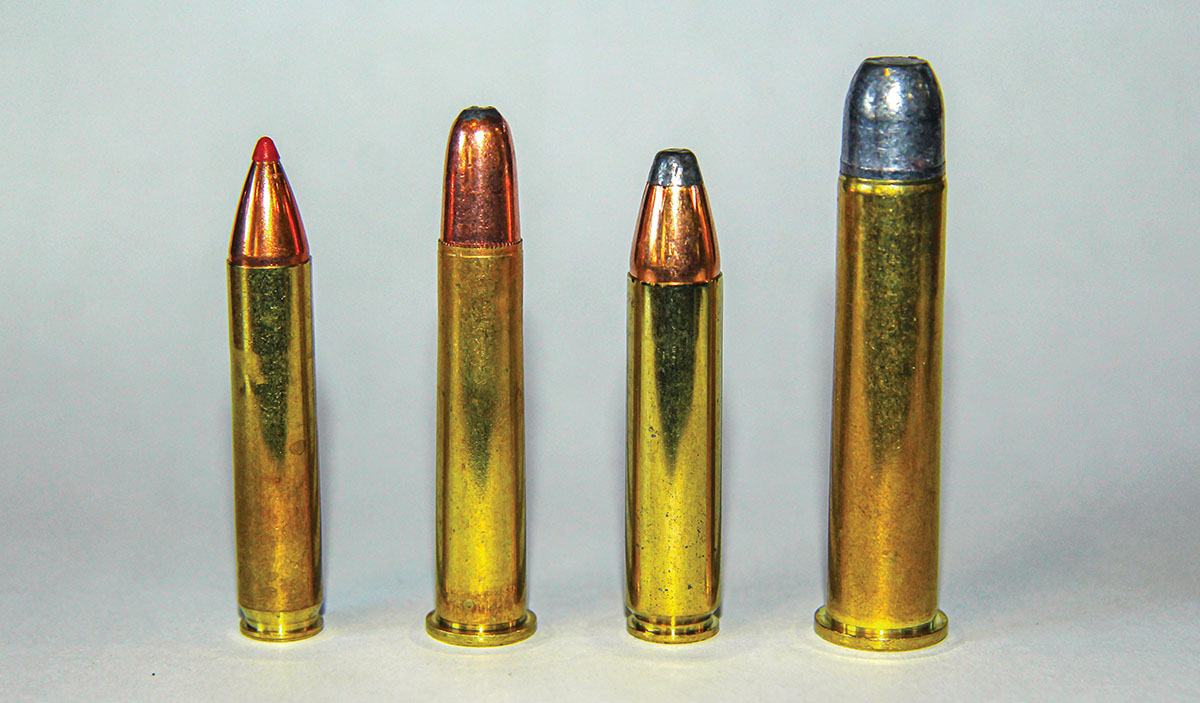
I initially mistook the Trail Hunter’s Tungsten (H-237) CERAKOTE finish for bead-blasted stainless steel, as it holds the same feel and hue. The CERAKOTE finish offers essentially the same protection from the elements, but without the added cost of stainless steel. However, owners must remember this is still a carbon-steel barrel, meaning the bore is not afforded the same protection. A light coat of oil and thoroughly taping the muzzle would make appropriate precautions in inclement weather, or say, a couple weeks under Alaska’s woolly skies.
The 110 Trail Hunter is based on Savage’s proven carbon-steel 110 rounded action. The 110 actions won’t provide the glass-smooth cycling of, say, an early Winchester M70 or Sako, but in this case in particular, it ran smoothly enough, despite the stiff transition at the top of the bolt lift while engaging the cocking mechanism. This 110 fed from a polymer four-round magazine, which required a sharp rap with the heel of the hand to seat firmly into the polymer magazine box. The magazine disengages for reloading satisfactorily and cannot be top fed due to the 110’s closed-top/side-ejection-port round action design. Feeding proved completely reliable. The trigger guard is molded polymer and allows plenty of room for a gloved trigger finger. The action is held in place by two hex-head bolts, front and middle, a third hex-head “wood screw” securing the rear of the trigger guard.
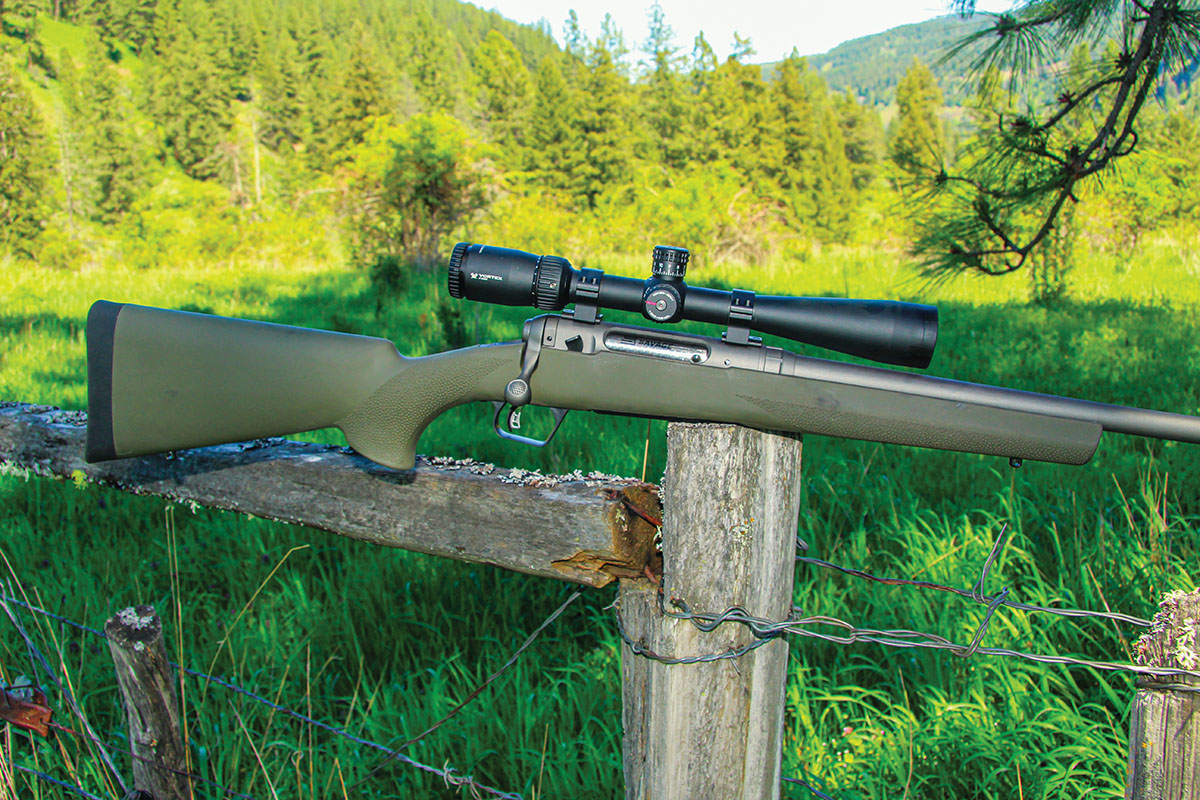
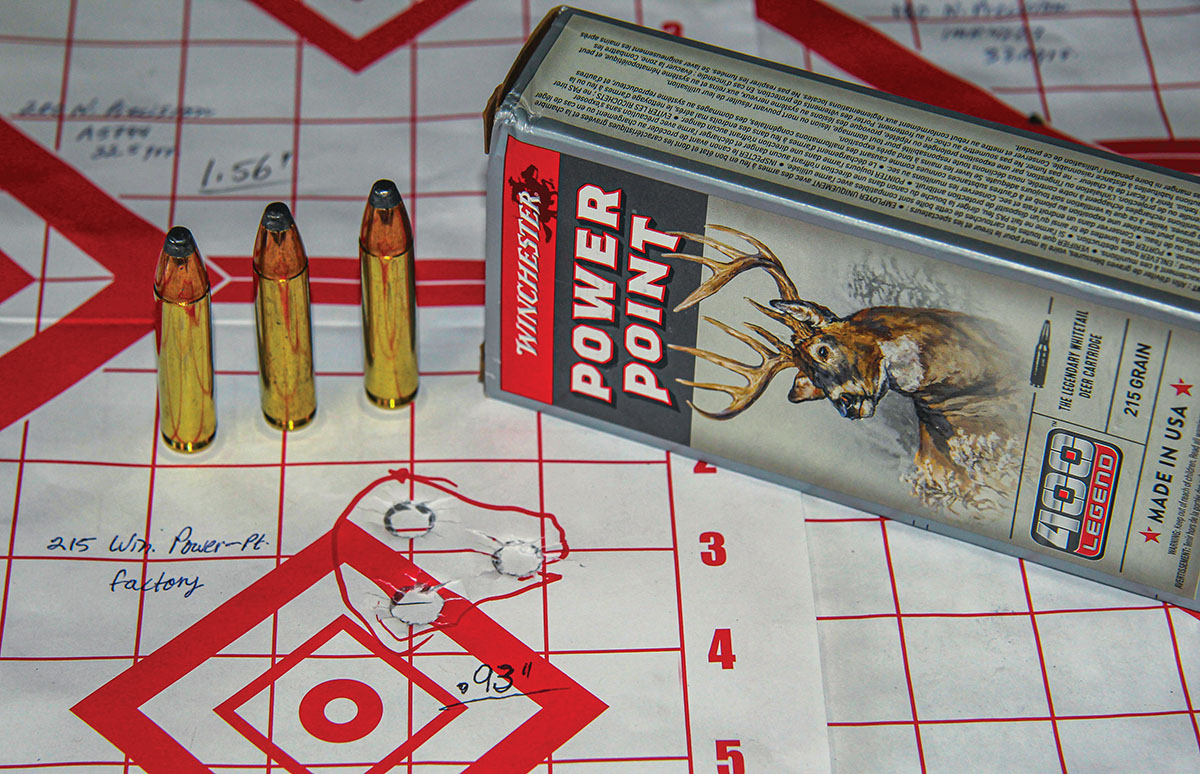
Unsurprisingly, the Trail Hunter included Savage’s proven center-blade AccuTrigger. The center blade, of course, acts as a secondary safety, the rifle is unable to fire without depressing that blade. This allows the trigger to be user-adjusted between 2.5 and 6 pounds while allowing the lawyers to sleep at night. As delivered, the trigger broke surprisingly crisp at about 4 pounds. The rifle came out of the box at 7.2 pounds, hitting the scales at 9.46 pounds with the addition of a turreted Vortex Optics 4-12x 40mm Diamondback Tactical scope set in 1-inch, medium Warne four-screw steel rings.
Most impressively, the 110 Trail Hunter comes with a manufacturer’s suggested retail price of just $639. This is one hell of a hunt-ready rifle for the money.
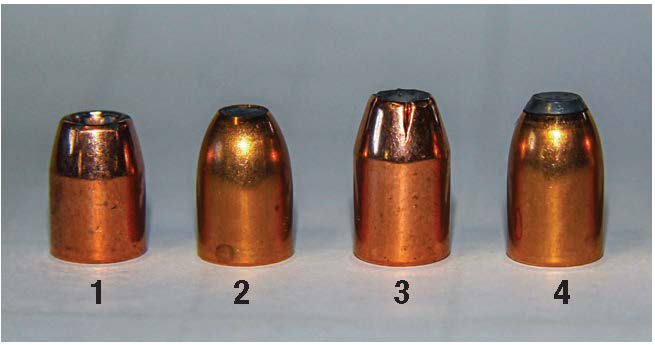
The only factory ammunition – and brass – available before press time was Winchester’s 215-grain Power-Point, which placed three shots into .93 inch at 100 yards and with an average velocity of 2,388 fps. This exceeded the advertised velocity by 138 fps. Tearing down a factory round, it held
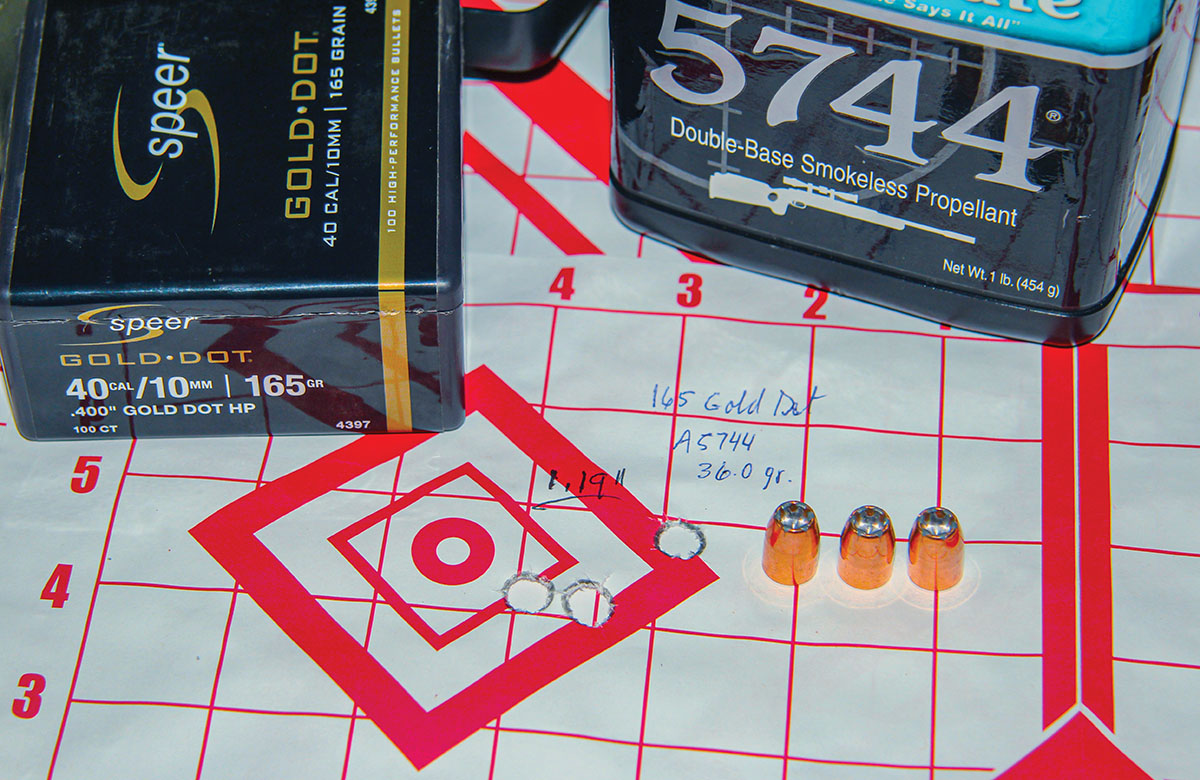
Handloading the 400 Legend parallels that of the 350 Legend, including full-length
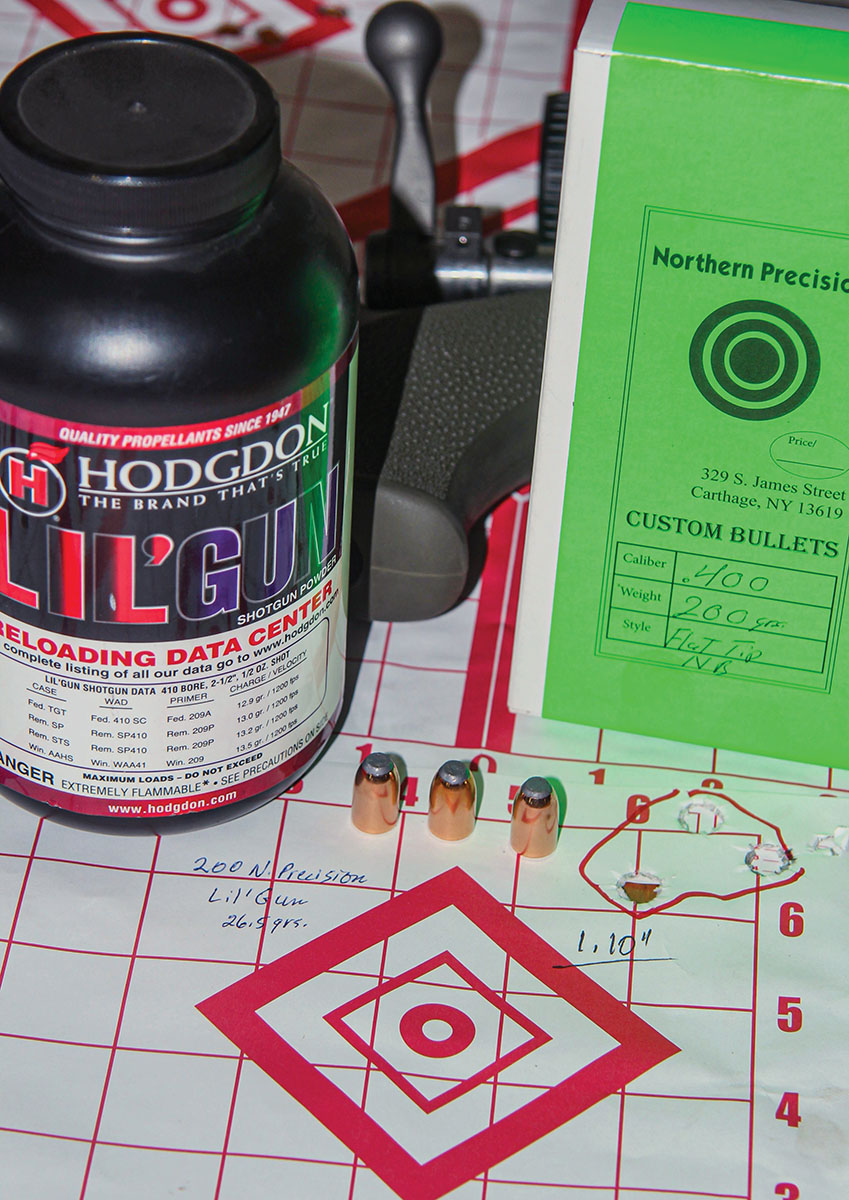
Bill Noody from Northern Precision provided a 180-grain Round Nose Flat Tip (RNFT) and a 200-grain Flat Tip (both non-bonded, though bonded-core options can be ordered). I also chose Speer’s 10mm 165-grain Gold Dot and Nosler’s 200-grain ASP with the hope they would stand up to the 400 Legend’s additional velocity. Like most straight-walled cartridges, the 400 Legend feeds on fast-burning powders that also serve rounds such as the 22 Hornet or 218 Bee.
All handload bullets ultimately assembled acceptable groups at velocities that compared favorably with factory loads, though none matched the sub-MOA group resulting from the Winchester 215-grain Power-Point load. The Speer 165-grain bullet did best with 36.5 grains of Accurate 5744, grouping in 1.19 inches at 2,481 fps, though 38 grains of Accurate No. 11 FS managed 1.25 inches at a faster 2,777 fps.
Northern Precision’s 180-grain bullet managed a 1.44-inch group using 27.5 grains of Hodgdon Lil’Gun at 2,332 fps, while the Nosler 200-grain grouped into 1.31 inches at 2,221 fps using 29 grains of Accurate No. 11 FS. The Northern Precision 200-grain bullet shot the best handload group, 26.5 grains of Hodgdon Lil’Gun printed into 1.10 inches at 2,240 fps. All of these are deer- or hog-ready at any reasonable woods range.
It is easy to see this as a thumper of a whitetail cartridge, though as a western hunter, I see the 400 Legend and Savage’s handy 110 Trail Hunter as tailor-made for black bears shot at still-hunting or bait-station ranges, or even blacktimber elk when paired with a sturdy bonded bullet.



